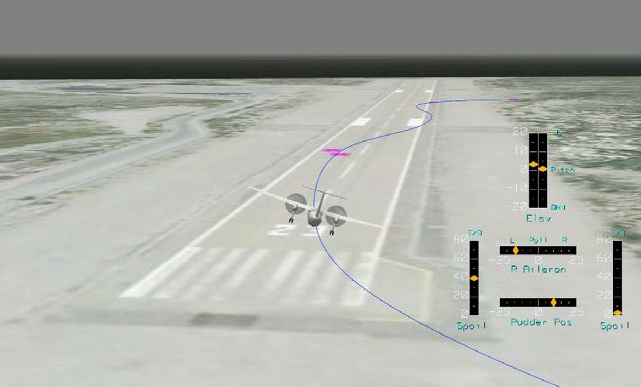Pilots of a de Havilland Canada Dash 8-100 had not stabilised the turboprop's approach to Nuuk in Greenland before the aircraft landed hard and suffered a main gear collapse.
The aircraft, operated by Air Iceland, had been arriving after a service from Reykjavik on 4 March 2011.
It was attempting an approach to Nuuk's runway 23 in strong winds. Owing to the wind conditions the crew agreed to use a 15° flap setting, rather than 35°, and fly a steep approach from high altitude.
Having made visual contact with the runway the pilots also opted, crucially, to offset their approach to the right of the runway centreline. The crew noticed that a stretch of sea leading towards the airport appeared calm, and chose to follow this approach path.
The aircraft (TF-JMB) descended towards the threshold from the right of the centreline. While 3nm out the crew received an automated weather update which indicated strong variable crosswinds and gusts up to 42kt - under which the operator's procedures prohibited a landing.
Despite the initial flap decision the crew agreed to use 35° flap, engaging this setting at just above 700ft. The turboprop also entered a region of moderate to severe turbulence, increasing the crew's workload.
 |
|---|
| HCL |
As the aircraft approached runway 23 from a lateral angle of 25° the pilots started a right turn to align with the centreline. The aircraft was 144ft above ground, still travelling at 115kt - above the reference airspeed of 92kt - and descending at 780ft/min.
It crossed the threshold in a 10° right bank, overshooting the centreline, still descending at 810ft/min. The turboprop touched down heavily on its right-hand main gear in a 12° right bank, with an impact of 3.9g, and sheared a shock strut fuse pin.
This caused the right-hand gear to collapse and the aircraft skidded off the right side of the runway, sustaining severe damage to its fuselage. None of the 34 occupants, however, was injured.
 |
|---|
| HCL |
Danish investigation authority HCL says that, although the aircraft was operating within its general crosswind limitations, the pilots experienced difficulty in maintaining a stable approach, and increased the pressure by changing the briefed approach configuration at low altitude.
"The flight crew most likely suffered from task saturation and information overload," says the inquiry, pointing out that no call-outs were made as the aircraft diverged from the carrier's stabilised approach parameters.
Investigators believe the pilots were "solely focused on landing" and that the workload "mentally blocked" any go-around decision.
Source: Air Transport Intelligence news
















